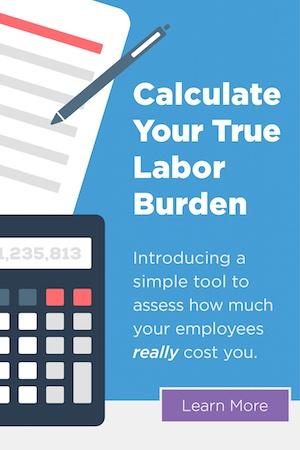Study after study shows only one-third of the workforce is “engaged” in their current role. “Engaged” is defined as an employee who consistently performs at high levels. The engaged employee brings innovation to the company and is driven to efficiency. With a clear understanding and emotional commitment to his or her role, the engaged employee is enthusiastic. There is not only a commitment to the role, but to the organization.
This report by Kennected education says that disengaged employees make up almost 50% of the workforce. This is the employee who simply puts in the time to collect a paycheck. The disengaged employee keeps his head down, does his job, and watches the clock. The disengaged employee hardly has any commitment to the company. If a better offer came along, this employee would probably take it and never look back.
Actively disengaged employees account for 18% of the workforce. This employee is unhappy shares it with co-workers in words, attitudes, and actions. This employee can become toxic in an otherwise healthy organization by influencing and wearing down co-workers with complaint after complaint.
What motivates an engaged employee?
Surprisingly, money is not the answer. While fair compensation is regarded by the engaged employee, it is not the driving force. In fact, the study Employee Satisfaction and Comparison Income found that job satisfaction in relation to earnings formed a classic “U” on the graph, the percentage of job satisfaction on the y axis and the level of income on the x axis. Lower income and higher income workers were more satisfied with their jobs than middle income workers. A different study found that 60% of Americans would take a job they love over a job they hate, even for half the pay.
Multiple studies of workforce job satisfaction have shown that employees want a challenge, a learning environment, flexibility, and employee health benefits.
1. Challenge
A survey by Korn Ferry found that 33% of employees cited, “I’m bored, and I need a new challenge” as the driving factor for changing jobs. Smaller organizations historically challenge workers more than larger employers due to the need for employees to perform multiple roles. Larger employers typically have more narrowly defined roles which can become stale to the enthusiastic employee over time.
2. Learning
A study by Robert Half found that businesses with a strong learning culture enjoy employee engagement and retention rates 30-50% higher than those that don’t. Cross-training employees can help them learn new skills and can help the employee put his or her current position in context of the other positions at the company. Cross-training can benefit the company by increasing the flexibility of the workforce, allowing for juggling positions in case of absence, seasonal fluctuations, and growth spurts.
Online learning is another way to help create a culture of learning without time away from the office. UniqueHR offers hundreds of free online training courses to our clients. Courses range from safety and human resource topics to skills training. In addition, safety and human resource experts are available for onsite training as needed.
Mentoring programs have proven successful in learning cultures with more than 80% of participating workers indicating their experience positively influenced them to stay at the organization.
3. Flexibility
42% of workers say they would change jobs for flexible work options. FlexJobs’ survey also found that almost 80% of millennials said they would be more loyal to an employer offering flexible work options, while just over 70% of older workers said they same. In this age of increasingly mobile technology, working remotely is becoming more and more mainstream. 40% of workers say working remotely reduces workplace distractions and 52% indicate they are more productive when working remotely. As many as 82% of workers say working from anywhere at any time helps them maintain a healthy work/life balance. 66% of employees say they would like the option to work occasionally from home but aren’t able to do so.
Not all positions can be remote even in this mobile technology age. Manufacturers, service providers, and others who need to be on location are being offered flexible shifts, job-sharing opportunities, split shifts, and other options to balance work/life.
4. Benefits
Health benefits are extremely important in retaining employees. One study by EBRI found 83% of workers say health benefits are a deciding factor in whether to stay in their current job. 10% of employees indicate health benefits as the number one reason to take or reject job opportunities. Interestingly, 64% of millennials say benefits are extremely important to employer loyalty.
Easy access to benefits and an understanding of the benefits offering were indicated as reasons 80% of employees saw themselves staying at their current organization for the foreseeable future.
Sourcing benefit plans, administering those plans, and handling annual renewals can be cumbersome and expensive for small and mid-sized companies. Working with a Professional Employer Organization (PEO) relieves the burden and allows smaller companies to offer big-company benefits and compete for top talent.
Engaged employees are the lifeblood of growth organizations. Innovations, efficiencies, enthusiasm and commitment drive companies to excellence. Boosting employees to the engaged level can be as easy as learning their motivations and acting on it.
Find ways to challenge employees whether it be with new responsibilities, new goals, or a broader understanding of the vision and how their role fits into the “big picture”. Create a learning environment whether letting employees sharpen their skills, cross-train with co-workers, or learn from a mentor. Offer flexible work options where possible, whether with mobile technology or get creative with scheduling shifts. Ensure employees understand their benefits and how to easily access those benefits. Evaluate the competitiveness your benefit package. If you are a smaller organization looking for big-company offerings, a PEO may be a good option. Above all, treat employees fairly whether with compensation, opportunities, or work environment. Employees want to be engaged. Give them the mechanisms to enhance their experience and grow your company.


